کیت استخراج DNA از سلول و بافت| Cell and Tissue DNA isolation kit
کیت استخراج DNA از سلول و بافت| Cell and Tissue DNA isolation kit
این کیت یک روش راحت و سریع برای جداسازی DNA کل از نمونه های کشت سلولی و بافتی را فراهم می کند. DNA خالص شده از بالاترین کیفیت برخوردار است و به طور کامل با تمام کاربردهای پایین دستی مانند PCR، qPCR، NGS و ریزآرایه ها سازگار است زیرا تمام مواد اسید هیومیک و سایر مهارکننده های PCR در طول فرآیند جداسازی حذف می شوند. این روش برای دستیابی به نتایج قابل اعتماد در 60 دقیقه بهینه شده است
15,800,000 ریال
توضیحات محصول
کیت استخراج DNA از سلول و بافت| Cell and Tissue DNA isolation kit
قیمت کیت استخراج DNA از سلول و بافت|قیمت Cell and Tissue DNA isolation kit
KIADENA
Cell And Tissue DNA Isolation Kit
Cat. No:
FPKT023.0025
FPKT023.0050
FPKT023.0100
Contents:
Kit storage:
![]() This kit should be stored at room temperature.
This kit should be stored at room temperature.
![]() Proteinase K and RNase should be stored at -20 °C.
Proteinase K and RNase should be stored at -20 °C.
![]() If properly stored, all kit components are stable until the expiration date printed on the label.
If properly stored, all kit components are stable until the expiration date printed on the label.
![]() After adding Ranse to the DT1 buffer and absolute ethanol to wash buffers, Store the DT1 and wash Buffers at +2 to +8°C
After adding Ranse to the DT1 buffer and absolute ethanol to wash buffers, Store the DT1 and wash Buffers at +2 to +8°C
Additional Equipment and Reagent required
- Absolute ethanol
- Standard tabletop microcentrifuge capable of 13,000 x g centrifugal force
- Microcentrifuge tubes, 1.5 ml, sterile
Application
This kit provides a convenient and rapid method to isolate total DNA from cell culture And Tissue samples. The purified DNA is of the highest quality and is fully compatible with all downstream applications such as PCR, qPCR, NGS, and microarrays since all humic acid substances and other PCR inhibitors are removed during the isolation process.
The procedure is optimized to achieve reliable results within 60 min.
Handling Requirements and Safety Information
![]() All solutions are clear and should not be used when precipitates have formed. Warm the solutions at +15 to +25°C or in a 37°C water bath until the precipitates have dissolved.
All solutions are clear and should not be used when precipitates have formed. Warm the solutions at +15 to +25°C or in a 37°C water bath until the precipitates have dissolved.
![]() DT3 Buffer contains guanidinium hydrochloride which is an irritant.
DT3 Buffer contains guanidinium hydrochloride which is an irritant.
![]() Do not allow DT2 Buffer and DT3 Buffer to touch your skin, eyes, or mucous membranes. If contact does occur, wash the affected area immediately with large amounts of water.
Do not allow DT2 Buffer and DT3 Buffer to touch your skin, eyes, or mucous membranes. If contact does occur, wash the affected area immediately with large amounts of water.
![]() If you spill the reagent, dilute the spill with water before wiping it up.
If you spill the reagent, dilute the spill with water before wiping it up.
![]() Do not use any modified ethanol.
Do not use any modified ethanol.
![]() Do not pool reagents from different lot numbers.
Do not pool reagents from different lot numbers.
![]() Immediately after usage, close all bottles to avoid leakage, varying buffer concentrations, or buffer conditions.
Immediately after usage, close all bottles to avoid leakage, varying buffer concentrations, or buffer conditions.
![]() After first opening store all bottles in an upright position.
After first opening store all bottles in an upright position.
![]() Do not allow the DT2 Buffer and DT3 Buffer to mix with sodium hypochlorite found in commercial bleach solutions. This mixture can produce highly toxic gas.
Do not allow the DT2 Buffer and DT3 Buffer to mix with sodium hypochlorite found in commercial bleach solutions. This mixture can produce highly toxic gas.
![]() Wear protective disposable gloves, laboratory coats, and eye protection, when handling samples and kit reagents.
Wear protective disposable gloves, laboratory coats, and eye protection, when handling samples and kit reagents.
![]() Do not contaminate the reagents with bacteria, viruses, or nucleases. Use disposable pipets and nuclease-free pipet tips to remove aliquots from reagent bottles.
Do not contaminate the reagents with bacteria, viruses, or nucleases. Use disposable pipets and nuclease-free pipet tips to remove aliquots from reagent bottles.
preparation procedure:
Working Solution Preparation
![]() add RNase A to DT1 Buffer completely Dissolve the RNase A by vortexing. store the DT1 buffer at 4 °C.
add RNase A to DT1 Buffer completely Dissolve the RNase A by vortexing. store the DT1 buffer at 4 °C.
FPKT023.0025-25 preps
![]() Add 5 ml absolute ethanol to DT3 Buffer Bottle.
Add 5 ml absolute ethanol to DT3 Buffer Bottle.
![]() Add 24 ml of absolute ethanol to the Wash Buffer Bottle.
Add 24 ml of absolute ethanol to the Wash Buffer Bottle.
FPKT023.0050-50 preps
![]() Add 10 ml absolute ethanol to DT3 Buffer Bottle.
Add 10 ml absolute ethanol to DT3 Buffer Bottle.
![]() Add 48 ml of absolute ethanol to the Wash Buffer Bottle.
Add 48 ml of absolute ethanol to the Wash Buffer Bottle.
FPKT023.0100-100 preps
![]() Add 20 ml absolute ethanol to DT3 Buffer Bottle.
Add 20 ml absolute ethanol to DT3 Buffer Bottle.
![]() Add 48 ml of absolute ethanol to each Wash Buffer Bottle.
Add 48 ml of absolute ethanol to each Wash Buffer Bottle.
![]() Please note that the Ethanol concentration of a Washing Buffer may decrease during long-term storage resulting in a drop-down of the final DNA yield.
Please note that the Ethanol concentration of a Washing Buffer may decrease during long-term storage resulting in a drop-down of the final DNA yield.
![]() before starting Incubate the Elution buffer at 55 to 65 ° C until the end of the protocol to obtain the maximum yields.
before starting Incubate the Elution buffer at 55 to 65 ° C until the end of the protocol to obtain the maximum yields.
Protocol
- Sample preparation
1a. Preparation for Isolation of DNA from Cultured Cells (suited for 1~5× 106 cells): Pellet the cells from cell culture by centrifuge in 3000×g for 5 min. Discard the supernatant (about 106 cells). Proceed with step 2.
1b. Preparation for Isolation of DNA from Tissues: Thoroughly homogenize the tissue mechanically using a homogenizer Alternatively, grind the tissue to a fine powder with liquid nitrogen in a precooled mortar or cut the tissue into small pieces on a sterile petri dish by a scalpel. For frozen tissue samples stored in 20% glycerol or 20% DMSO, pellet the sample by centrifugation, and discard the supernatant before homogenization. Cutting the tissue into small pieces increases the yield of genomic DNA and reduces lysis incubation time. Transfer 20 mg of homogenized tissue to a 2 ml tube. Do not use more than 20 mg of tissue. Proceed with step 2.
- Add 200 μl DT1 Buffer. Resuspend by vortex for 15 s. Incubate at 37ºC for 30 minutes. During incubation, invert the tube occasionally.
- Add 10 μl of Proteinase K then mix by vortex. Incubate at 60ºC for at least 15 minutes. During incubation, invert the tube every 3 minutes.
- Add 200 μl DT2 Buffer to the microtube and mix them by invert.
- Add 200 μl of absolute ethanol to the sample and mix by vortex for 10 seconds.
- Centrifuge in 8000-10000×g for 1 min (to pellet the remaining cells).
- Transfer the supernatant into a DNA spin column assembled in a clean collection tube (provided). Centrifuge at 10000×g for 1 min at room temperature.
- Disconnect the DNA spin column from the collection tube and discard the flow-through solution. Reconnect the DNA spin column to the collection tube.
- Add 500 μl DT3 to the column and centrifuge (10000×g, 1 min). Discard flow through.
- Add 700 μl wash buffer to the column and centrifuge (10000×g, 1 min). Discard flow through.
- Centrifuge the DNA spin column at 10000×g for 1 min to remove residual ethanol.
- Place the DNA spin column into the clean new microtube. Add 30 μl of pre-warmed Elution Buffer or sterile DDW directly onto the column membrane and stand for 3 min. Centrifuge at 10000×g for 1 min.
- Add another 30 μl pre-warmed Elution Buffer or sterile DDW directly onto the column membrane and stand for 3 min. Centrifuge at 10000×g for 1 min.
- Check 7 μl of extracted DNA by 0.5 % agarose gel electrophoresis. Store DNA at 4˚C or -20˚C.
کیت استخراج DNA از سلول و بافت| Cell and Tissue DNA isolation kit
قیمت کیت استخراج DNA از سلول و بافت|قیمت Cell and Tissue DNA isolation kit
بررسی تخصصی
| تعداد Preparation را انتخاب کنید | 100, 50, 25 |
|---|
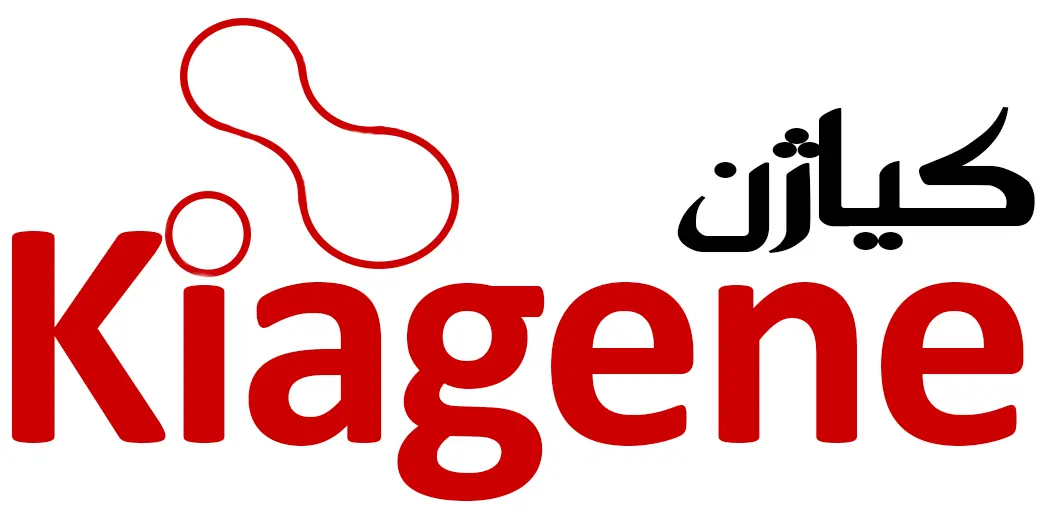
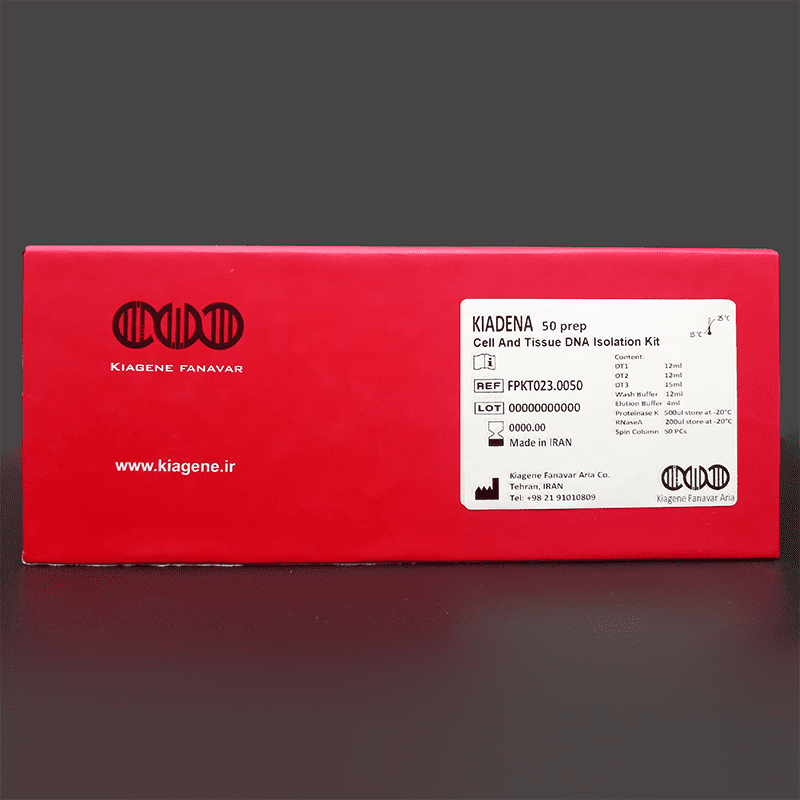




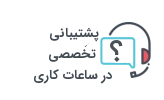



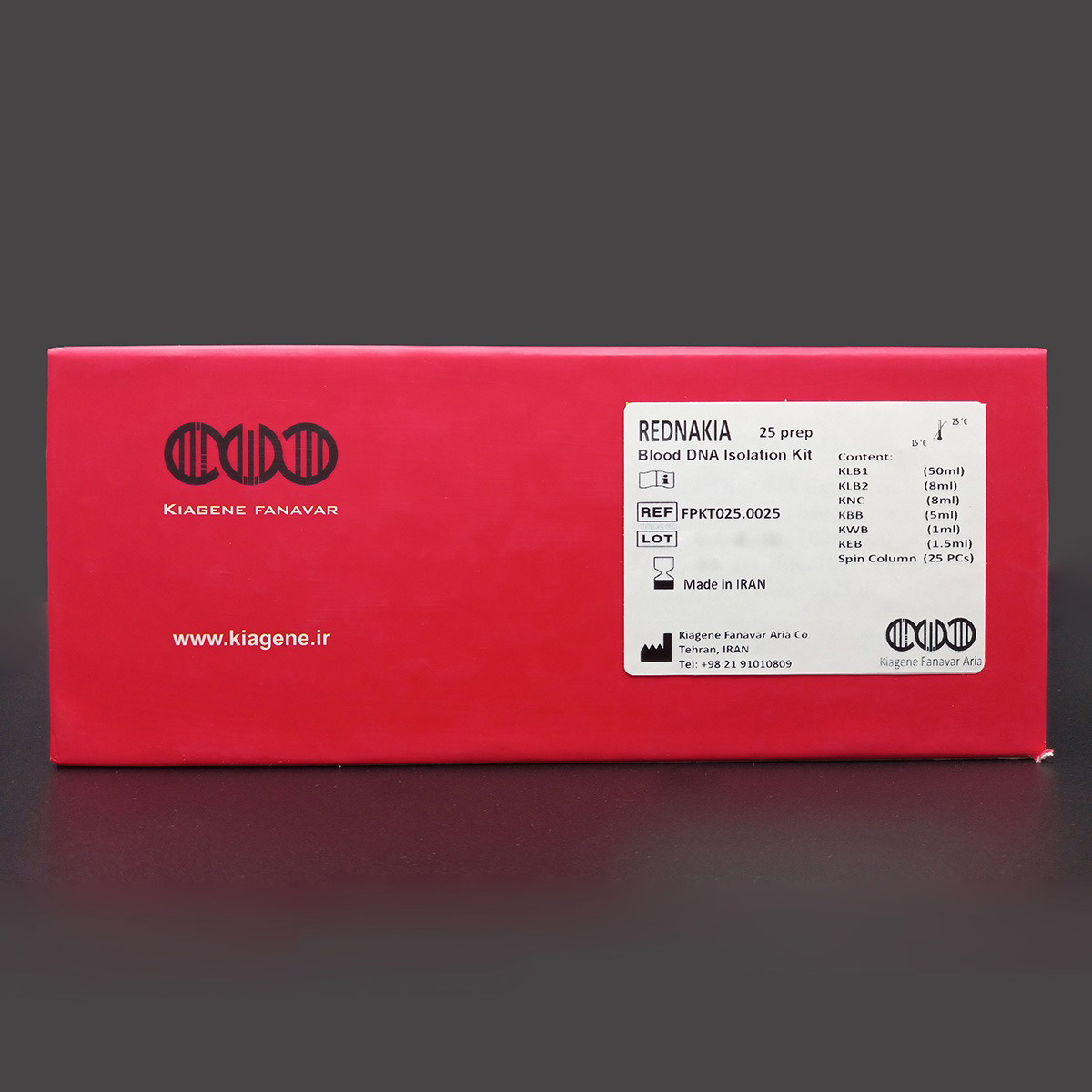
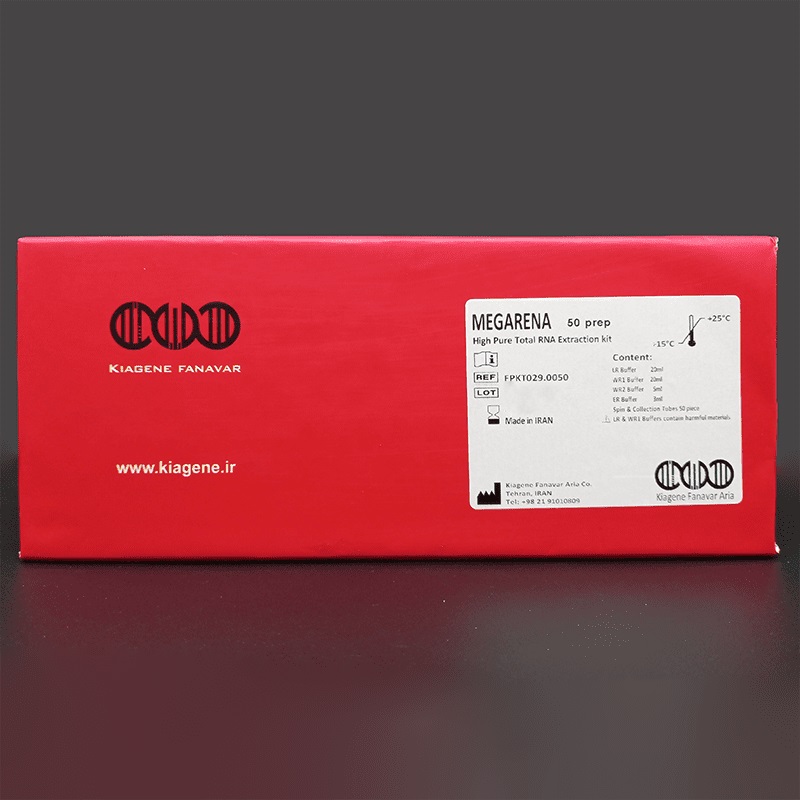


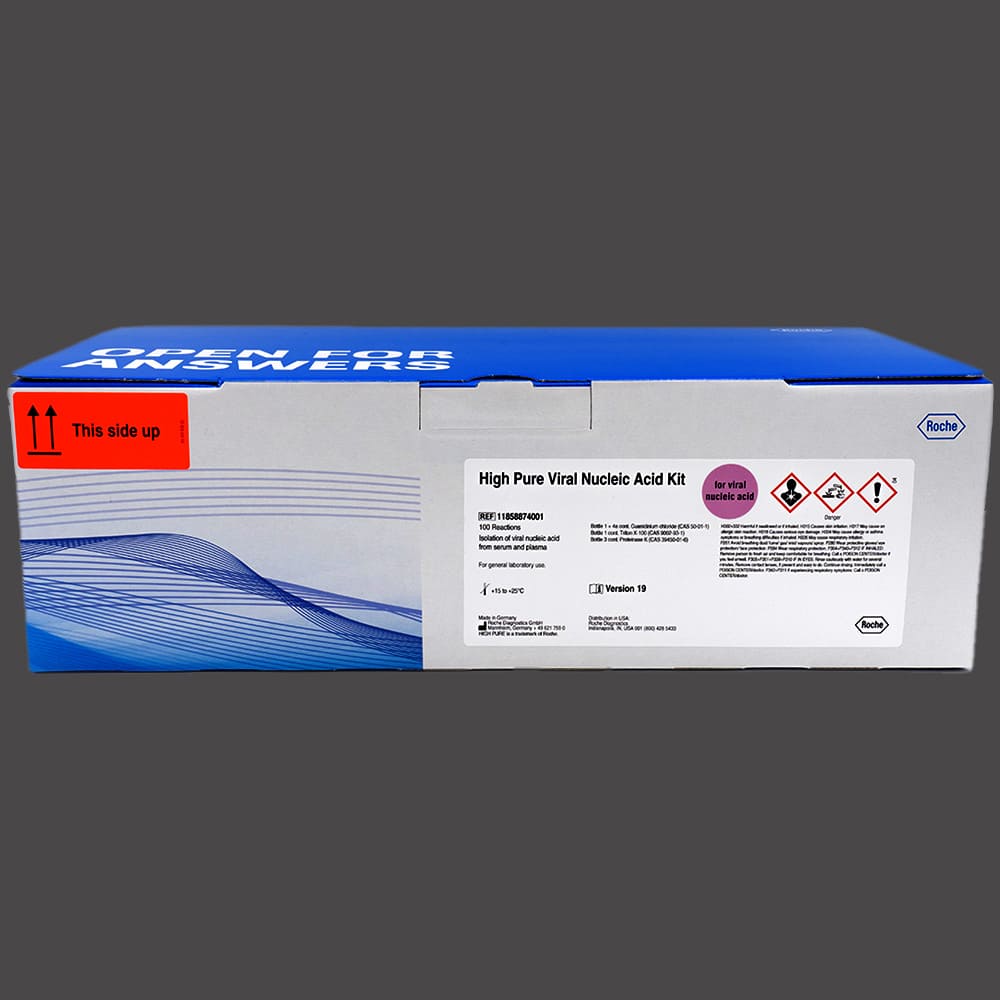
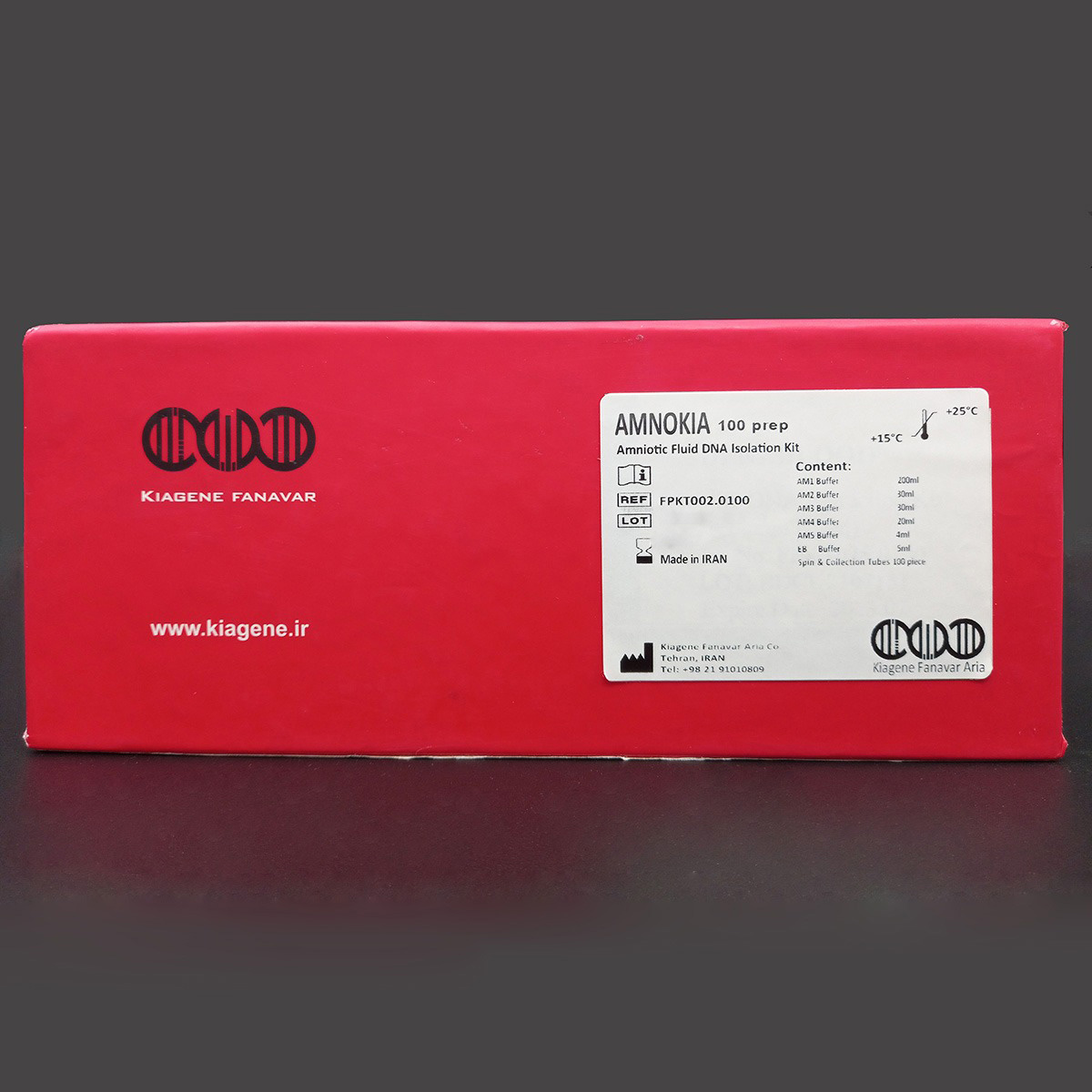
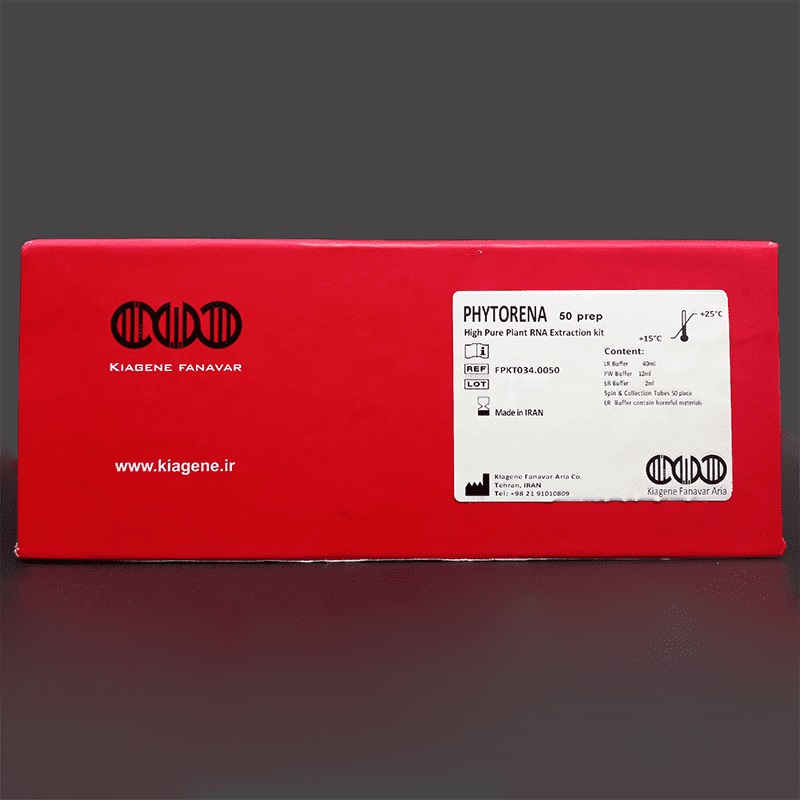
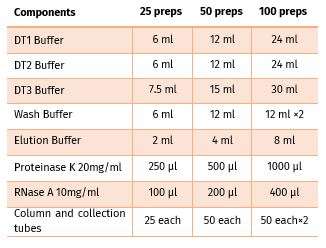


علی –
قیمت و کیفیت عالی